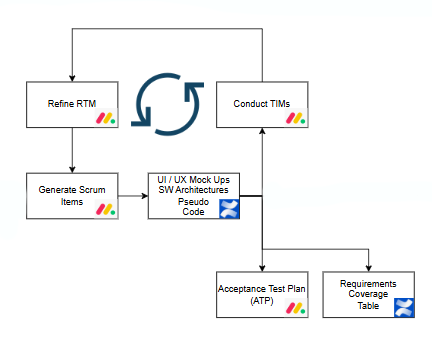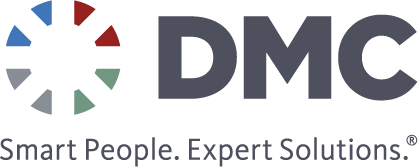In Aerospace, Defense, and Government (ADG) projects, success isn’t simply about delivery—it’s about trust. These projects are high-stakes, often complex, and inherently collaborative. When you bring on an ADG application partner, you’re not just outsourcing tasks—you’re entrusting them with your mission’s objectives, vision, and commitment to quality.
At DMC, we take that responsibility seriously. Our A.R.T.ful Engineering approach focused on Accountability, Reliability, and Traceability—is designed to ensure that we not only deliver but that we deliver in alignment with your goals, standards, and values. From day one, we strive to be the type of partner who shares your fate.
The Chain of Custody: From Idea to Execution

DMC uses digital tools like Monday.com and SharePoint to make this possible. Unlike traditional email chains, which can conflate conversations and obscure responsibilities, Monday.com enables us to:
- Track every thread of communication
- Assign ownership on both the client and DMC sides
- Establish closure on conversations
- Link requirements to source documentation and follow-up tasks
This platform becomes the foundation for project-wide visibility, accountability, and traceability—ensuring that nothing slips through the cracks.
Requirements That Reflect Your Vision
A critical part of any ADG project is capturing and refining the project’s requirements. We begin by reviewing Statements of Work (SOWs), standards, and other regulatory documents—each with unique language and specificity. From this, we build a Requirements Traceability Matrix (RTM) that serves as a blueprint for execution.
Each requirement in our RTM is:
- Expressed as a single, objectively testable statement (“shall,” “should,” etc.)
- Assigned a unique ID and traceable back to its source document, with page or section references
- Tagged with metadata like risk, priority, and type
- Given dual ownership—one DMC lead and one client stakeholder
- Placed under change control, where edits trigger automated approval workflows
This process aligns with best practices from NASA’s 7150.2, including SWE-050, SWE-051, and SWE-053. Monday.com’s automation features allow us to enforce these workflows in real time, tracking what was changed, by whom, and when.
Turning Objectives into Deliverables
Project requirements often start out broad or unclear. DMC works with clients to break these into detailed, manageable components linked to specific tasks, deliverables, and test cases, ensuring every development activity meets a defined requirement. Developers gain clarity, project managers can track progress effectively, and clients have a clear view of how their goals are being met. Whether a project includes 10 requirements or 10,000, this structured approach helps maintain transparency and control throughout the entire project lifecycle.
Why the Right Partner Matters
Entrusting your mission to a partner is about more than meeting deadlines—it’s about preserving your vision, ensuring compliance, and aligning with your standards of excellence. The right partner:
- Listens carefully and captures every detail
- Structures information for clarity and action
- Owns the process end-to-end
Your success is our mission, learn more about DMC’s Test & Measurement Automation Solutions and contact us for your next project.
Explore Additional Blogs in this Series
Read more about other key topics in NPR 7150.2 compliance through the remainder of our ADG Mission-Critical Applications series:







